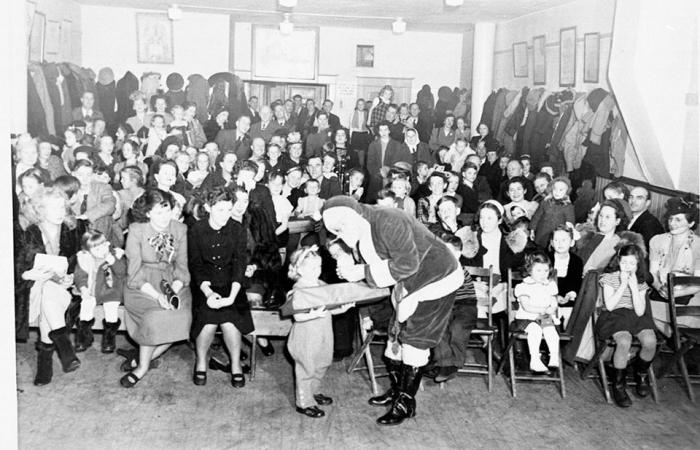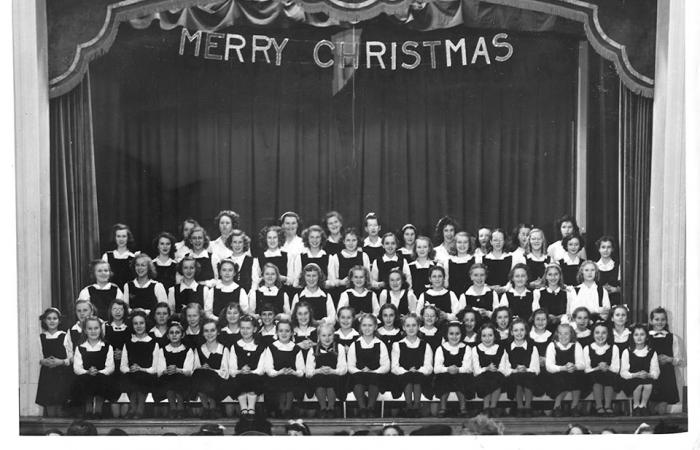The fur trade in the 1800s brought with it prospectors to Northwestern Ontario searching for mineral wealth. Foresters were attracted here by the vast abundance of trees. Many of them stayed to carve out a place to live from the wilderness. However, the biggest influx of people to colonize this “neck of the woods” came with the building of the Canadian Pacific Railway through this area during the 1880s. In an effort to populate this land, the federal government offered 160 acres of mainly rugged, forested, terrain for free to anyone who would come and homestead on it. But this free land came with requirements. The homesteaders had to live on it for at least two years, clear their land to build a house, field and grow crops, keep livestock, and together with neighbouring homesteaders, build a community. Each homesteader had to clear two acres of land every year using an axe and bucksaw to fell trees and horses to pull out stumps and drag trees away. Only when 16 acres had been cleared, were they given deed to the land.
A New Life
Many people from all over Europe, the United Kingdom and Ireland came here to homestead in search of a new life. Homesteaders built their homes from the trees they cleared and the land fed them with plentiful game and fish. The homesteaders from the area would build a church, a meeting hall, a store and hence a community. When the community grew, leaders were elected. In time, children were born, and when they became school age, a school was built, a teacher hired and a school board appointed. Just as buildings had to be constructed, roads needed to be built to connect communities. Usually about 15 of the men would make one to two miles of road a year.
It Was a Hard Life
The communities were isolated. Initially they were connected to each other only by railroad. When there was no train, they had to walk, ride a horse or, in the winter, ski or snowshoe which could be a five hour trip. It was a hard life, but the settlers were sturdy and determined to build a life for themselves. Together, they carved, from the wilderness, the towns and townships we know today. And they did it with a sense of pride in their accomplishments. They helped one another. They shared in each other’s achievements as well as their
setbacks.
A Deep Sense of Community
All this fostered a deep sense of community. As buildings and roads were being constructed, the social aspect of life took shape. A Music Festival was the big event in the spring. Each summer a pie social was the occasion. With the arrival of autumn, it was a time for the fall fair. Competitions were held such as horse racing and three-legged races for the kids (of all ages). People would show off the produce they had grown during the summer, the preserves they had made from it, and their best live stock. Prizes would be given for each. Although winning a prize was rewarding, the focus of these events was to build community spirit.
The Grand Finale
The grand finale of all the social activities of the year was the school Christmas Concert. The school board collected proceeds from the social events held throughout the year to finance it. The teacher would ensure every school child had a part with a costume no matter how small. There was carol singing, music playing, mainly fiddle and accordion, and plays like the Nativity scene and Sleeping Beauty. The women spent months sewing and altering costumes to ensure every child had one. They sewed yards of cheesecloth to make angel and fairy clothes. They made frilly aprons and head gear embroidered with tinsel. The sets for the plays were made by the men. Sometimes a talented parent would get up to play a tune for the audience. The evening’s event was often held in the school, but if it was big enough, it took place in the community hall. The highlight of the evening for the children was a visit from Santa Claus. One of the men would dress up to play the part. Santa gave each child a brown paper bag full of candy, an apple and a Mandarin orange. The orange was a special treat for the kids because it was probably the only one they would get all year. The communities didn’t abound with wealth, but then, they had all they needed.
Times have changed over the years, and the communities with them. The original homesteaders may have passed on leaving to us the legacy of their fortitude and labours. They gave to their children the traditions of their homelands from where they had immigrated. Especially, they left to us their love of Christmas.
I want to thank the following who assisted me in writing this article:
Everyone I spoke to who shared with me their memories
• Thunder Bay Public Library
• Thunder Bay Historical Museum






